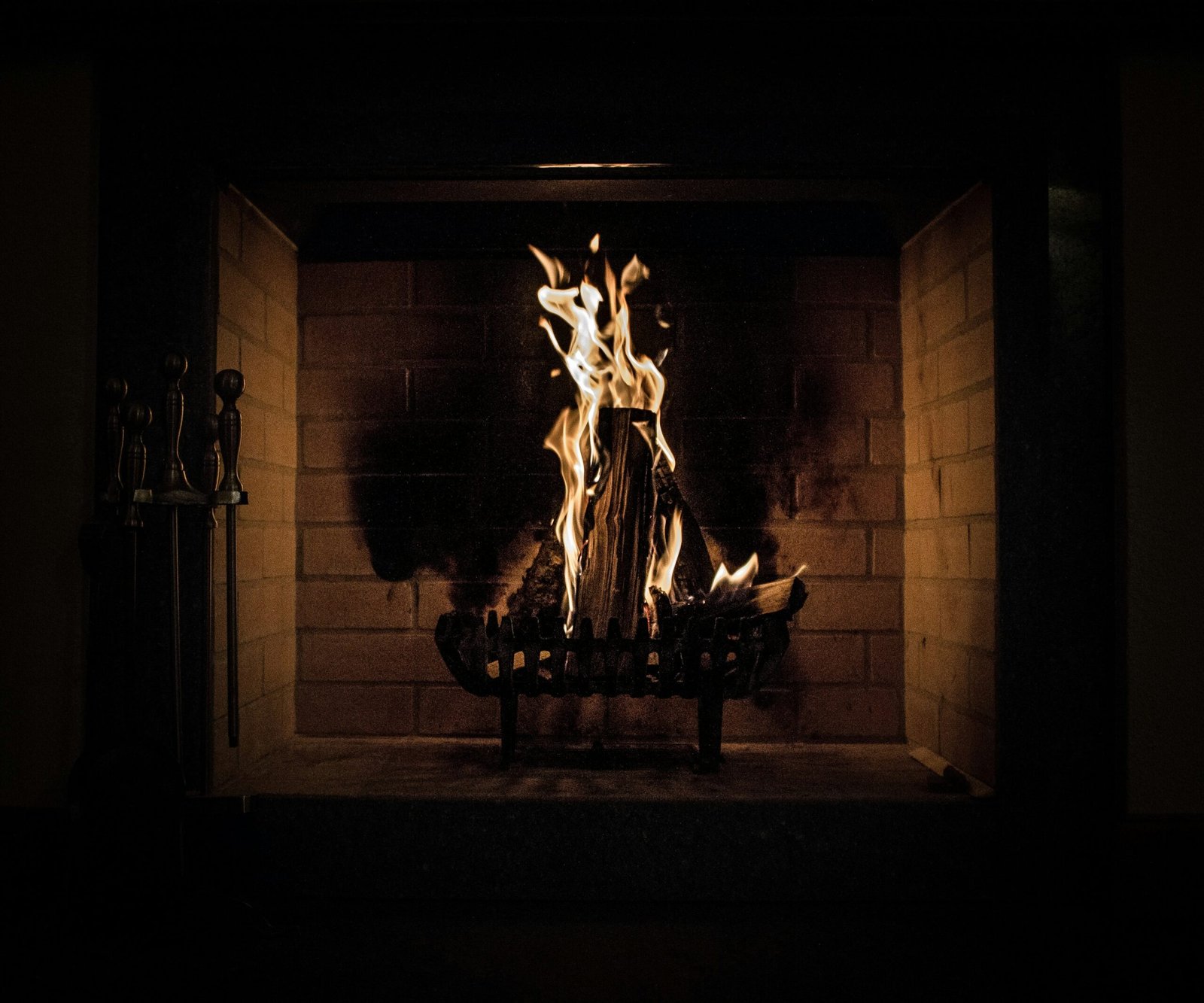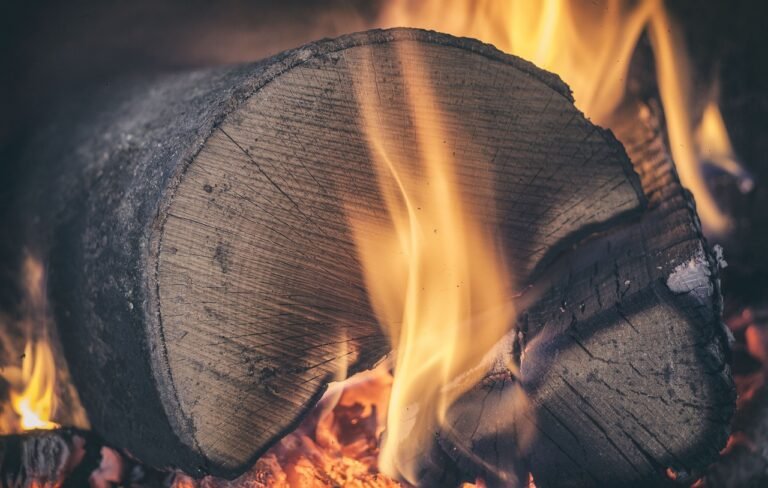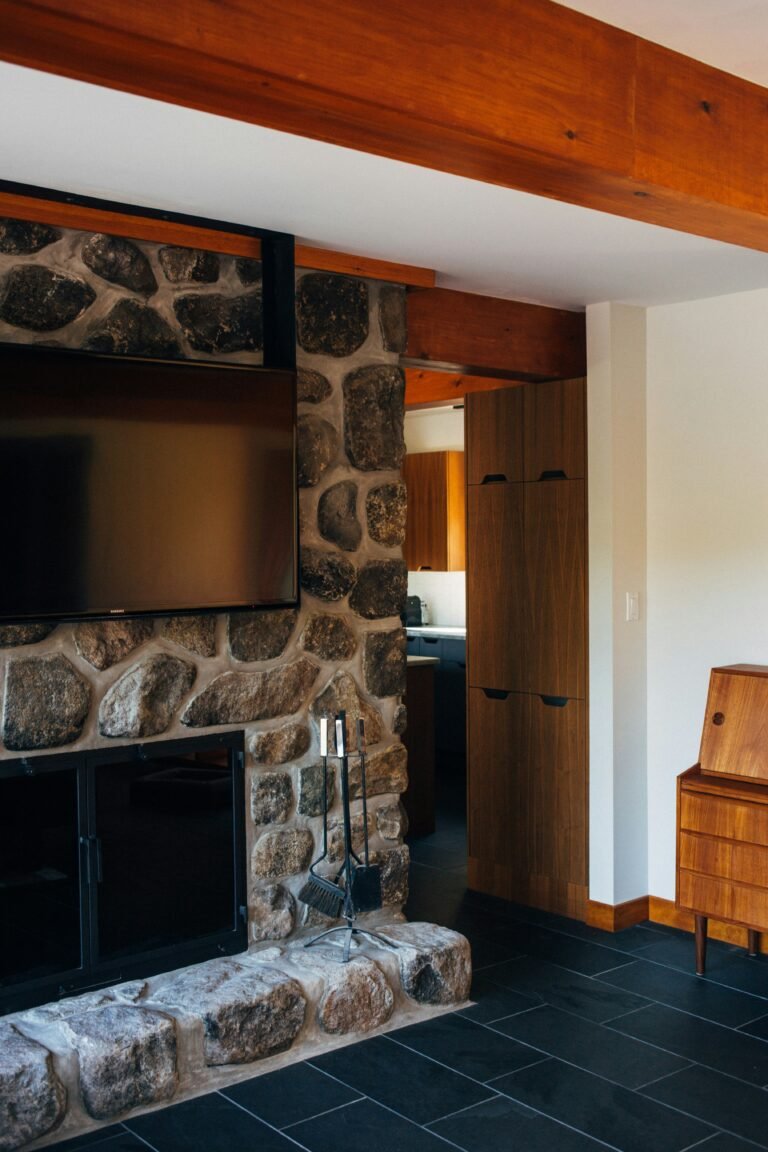Maintaining a fireplace is not only about cozy nights and crackling fires; it is about ensuring its longevity and functionality for years to come. In this article, we offer you invaluable tips and advice on achieving long-term fireplace maintenance. From regular cleaning routines to proper ventilation practices, we will guide you through the essential steps to keep your hearth in pristine condition. Get ready to discover the secrets of maintaining a fireplace that will bring warmth and comfort to your home for many winters ahead.
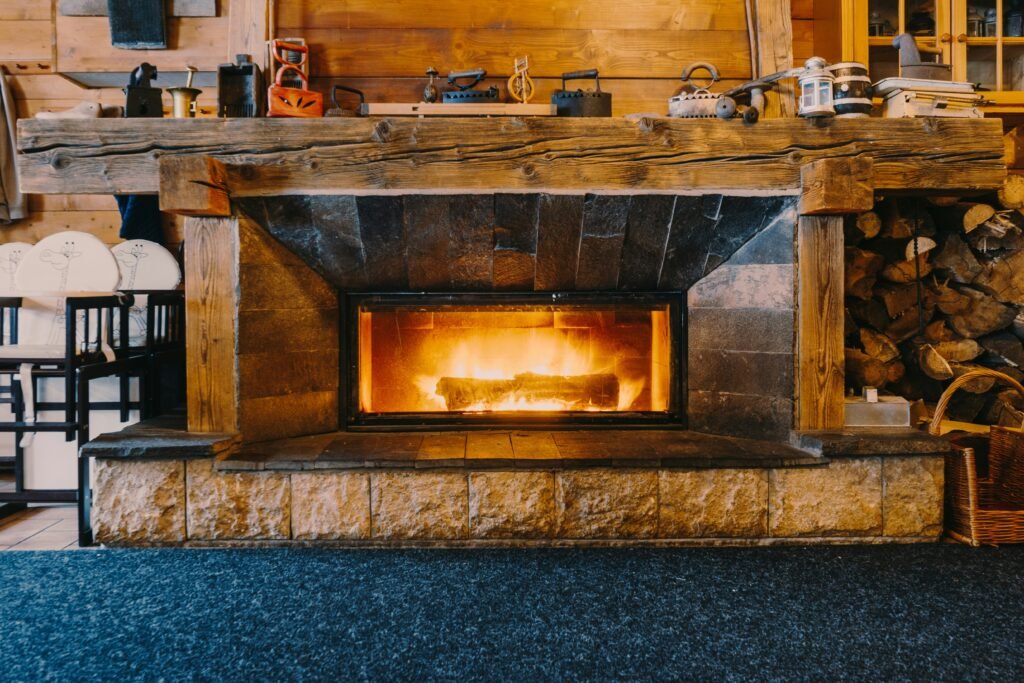
This image is property of images.unsplash.com.
Regular Cleaning
Keeping your fireplace clean is an essential part of long-term maintenance. Regular cleaning not only ensures the efficient and safe operation of your fireplace but also prolongs its lifespan.
Sweeping the Chimney
One crucial aspect of regular cleaning is sweeping the chimney. Over time, soot and debris can accumulate inside the chimney, posing a potential fire hazard. Hiring a professional chimney sweep is recommended to ensure that the job is done thoroughly and safely. A chimney sweep will use specialized tools to remove the buildup and ensure that your chimney is clear and free of blockages.
Cleaning the Firebox
The firebox is the area where you build and burn your fires. It is essential to keep the firebox clean to maintain proper airflow and prevent the buildup of ash and creosote. Using a fireplace shovel or brush, carefully remove any ashes or debris from the firebox and dispose of them properly. Be sure to wait until the ashes are completely cool before handling them.
Removing Ashes and Debris
Regularly removing ashes and debris from the hearth and surrounding areas is crucial. Accumulated ashes can pose a fire hazard and make your fireplace less efficient. Use a fireplace shovel or specialized ash vacuum to safely and effectively remove ashes from the hearth. Additionally, removing any debris, such as fallen leaves or sticks, from around the hearth area helps maintain a clean and safe environment.
Annual Inspections
In addition to regular cleaning, scheduling annual inspections for your fireplace is vital to catch any potential issues before they become major problems.
Hiring a Professional Inspector
A professional inspector will thoroughly examine your fireplace, chimney, and surrounding areas to identify any signs of damage or deterioration. They have the expertise and knowledge to spot even minor issues that may threaten the safety and functionality of your fireplace. Hiring a professional ensures that the inspection is conducted correctly and gives you peace of mind.
Checking for Cracks or Damage
During the annual inspection, the inspector will carefully examine your fireplace for any cracks or damage. Cracks in the firebricks or mortar can compromise the structural integrity of the fireplace and should be addressed promptly. Additionally, the inspector will inspect the chimney cap, spark arrestor, and chimney crown for any signs of damage that may need repair.
Inspecting Chimney Liner
The chimney liner plays a crucial role in directing smoke and gases out of your home safely. During the inspection, the condition of the liner will be checked to ensure it is intact and properly functioning. Any cracks or deterioration in the chimney liner can lead to a potential fire hazard and should be addressed immediately.
Proper Fuel Selection
Choosing the right fuel for your fireplace is essential to ensure optimal performance and reduce the risk of damage or hazards.
Choosing the Right Wood
Using seasoned hardwood, such as oak or maple, is recommended for burning in your fireplace. Seasoned wood has low moisture content, making it burn cleaner and produce less creosote buildup. Avoid using softwoods like pine or cedar as they have a higher sap content and can create more creosote, which can lead to chimney fires.
Avoiding Wet or Unseasoned Wood
Never burn wet or unseasoned wood in your fireplace. Wet wood not only produces more smoke and soot but also releases excess moisture into the chimney, increasing the risk of creosote buildup. It takes time for wood to dry properly, so make sure to store your firewood in a dry, well-ventilated area for at least six months before using it.
Using Proper Fireplace Accessories
When selecting fireplace accessories, such as fire starters, be sure to choose products that are safe and suitable for your fireplace. Avoid using flammable liquids, such as gasoline, to start your fire, as this can be extremely hazardous. Instead, use commercially available fire starters or kindling to ignite the fire safely.
Safe Burning Practices
Practicing safe burning techniques is crucial to prevent accidents and ensure that your fireplace operates efficiently.
Building and Maintaining a Proper Fire
To build a proper fire, start with a layer of tinder, such as dry twigs or newspaper, followed by kindling and then larger pieces of seasoned firewood. Ensure there is enough airflow to allow the fire to burn properly but avoid overloading the fireplace with too much wood. Once the fire is established, regularly tend to it by adding more wood as needed and removing any excess ash or debris.
Using Fire Screens or Glass Doors
Installing fire screens or glass doors on your fireplace not only enhances its aesthetics but also provides an extra layer of protection. Fire screens help prevent sparks and embers from escaping the fireplace and causing potential damage or injury. Glass doors can further enhance safety by acting as a barrier, preventing accidental contact with the flames or hot surfaces.
Avoiding Overloading the Fireplace
While it may be tempting to create a roaring fire, overloading your fireplace can lead to a variety of issues. Burning too much wood at once can cause an excess of smoke and soot, increasing the risk of creosote buildup. It can also strain the fireplace’s structural integrity and lead to cracks or other damage. Use moderation when adding wood to your fire and avoid overcrowding the fireplace.
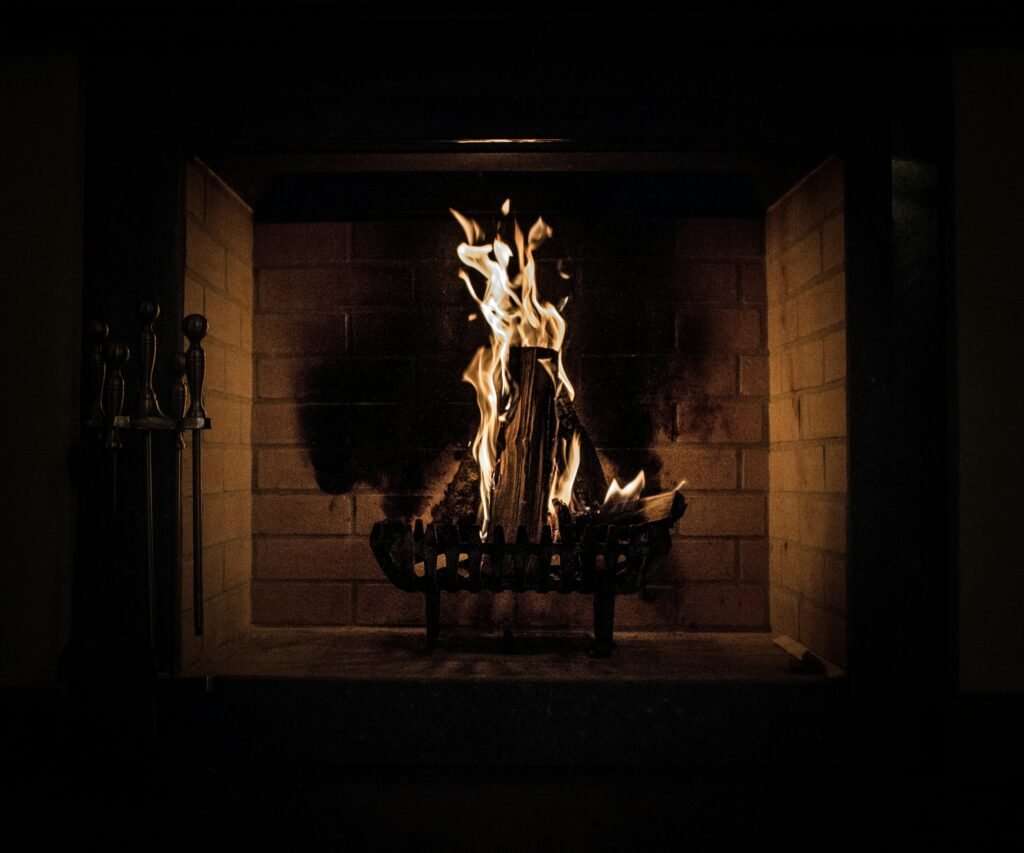
This image is property of images.unsplash.com.
Maintaining Airflow
Proper airflow is essential for efficient and safe fireplace operation. Lack of airflow can lead to poor combustion, excessive smoke, and even the release of dangerous gases into your home.
Clearing the Air Vents
Regularly check the air vents around your fireplace to ensure they are clear of any obstructions. Dust, debris, or furniture placed too close to the vents can restrict airflow and impact your fireplace’s performance. Keep the vents clean and unblocked to allow an even flow of air into the fireplace.
Checking for Obstructions
Apart from the air vents, it is vital to ensure that the chimney and flue are free from any obstructions. Birds’ nests, leaves, or other debris can accumulate inside the chimney, blocking the proper expulsion of smoke and gases. Regularly inspecting and cleaning the chimney can help maintain proper airflow and prevent potential hazards.
Using a Damper Properly
The damper controls the airflow through the chimney and regulates the fire. Make sure to open the damper fully before starting a fire and keep it open until the fire is completely extinguished and the chimney has cooled. Closing the damper when the fireplace is not in use helps prevent drafts and energy loss. Properly using the damper maintains optimal airflow and maximizes your fireplace’s efficiency.
Preventing Creosote Build-up
Creosote is a highly flammable substance that can accumulate inside your chimney, increasing the risk of chimney fires. Taking preventive measures to minimize creosote buildup is a crucial part of long-term fireplace maintenance.
Burning Hot Fires Periodically
Burning a hot fire periodically is an effective way to help remove the buildup of creosote. Hot fires create higher temperatures, which help in burning off the creosote and reducing its accumulation. However, it is important to ensure that your chimney is in good condition and has been inspected before attempting a hot fire.
Avoiding Smoldering or Slow Burning
Burning wood slowly or allowing the fire to smolder can create more creosote buildup. It is best to maintain a lively and well-ventilated fire to promote complete combustion and minimize the formation of creosote. Avoid damping down the fire too early or closing the damper before the fire has had a chance to burn fully.
Using Creosote Removal Products
Using specially formulated creosote removal products can help break down and remove existing creosote buildup inside your chimney. These products are designed to improve safety by reducing the flammability of creosote. However, it is essential to follow the manufacturer’s instructions carefully when using these products to ensure their safe and effective use.
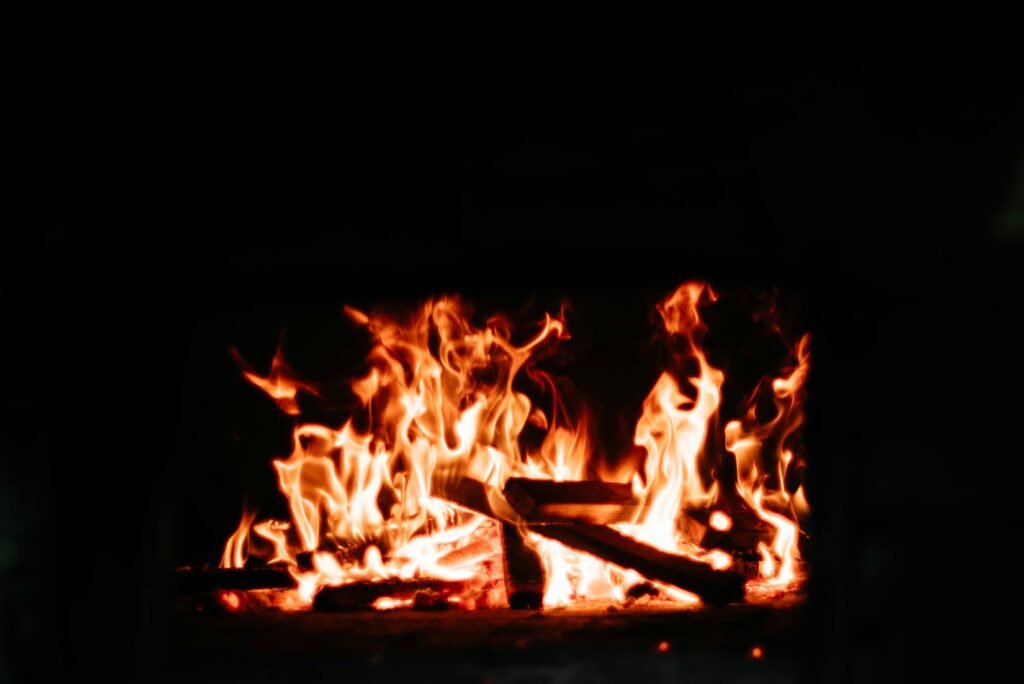
This image is property of images.unsplash.com.
Protective Measures
Taking proactive measures to protect your fireplace and surrounding area can significantly contribute to its longevity and safety.
Installing a Chimney Cap
A chimney cap is a protective cover that is installed on top of the chimney. It serves several purposes, including preventing rainwater, debris, and animals from entering the chimney. Installing a chimney cap helps protect your fireplace by reducing the risk of water damage, blockages, and nesting animals.
Using Spark Guards
Spark guards are screens that are placed in front of the fireplace opening to prevent sparks and embers from escaping. They act as a barrier, reducing the risk of fire or injury caused by stray sparks. Using spark guards provides an added layer of protection for your home and loved ones.
Keeping the Area Around the Fireplace Clear
Maintaining a clear and clutter-free area around your fireplace is essential for both safety and maintenance purposes. Keep furniture, curtains, and other flammable materials a safe distance away from the fireplace. Avoid storing logs or kindling directly next to the fireplace, as they can be a fire hazard. A clear and well-maintained area ensures that your fireplace operates efficiently and minimizes the risk of accidents.
Repairing Damages
Promptly addressing any damages or issues that arise is crucial to maintaining the long-term functionality and safety of your fireplace.
Fixing Cracks or Gaps
If you notice any cracks or gaps in the firebricks or mortar, it is important to have them repaired. Cracks in the fireplace can allow heat to escape, leading to decreased efficiency and potential structural damage. Repairing cracks or gaps ensures a tight seal and helps maintain the integrity of your fireplace.
Replacing Damaged Bricks or Tiles
If any bricks or tiles in your fireplace become damaged or loose, they should be replaced promptly. Damaged bricks can allow heat to transfer to the surrounding structure, potentially causing further damage. Replacing damaged bricks or tiles helps maintain the appearance and functionality of your fireplace.
Repairing Damaged Chimney Crown
The chimney crown is the topmost part of the chimney that protects the masonry from water damage. If the chimney crown becomes cracked or damaged, it can allow water to seep into the chimney, leading to further deterioration. Repairing or replacing a damaged chimney crown is essential to protect the structural integrity of the chimney and prevent water damage.
Maintaining Exterior
Taking care of the exterior of your fireplace is as important as maintaining its interior.
Cleaning the Chimney Exterior
Regularly cleaning the exterior of your chimney helps prevent the buildup of dirt, debris, and moss. Aside from detracting from the overall appearance of your fireplace, moss and dirt can expedite the deterioration of the masonry. Use a brush or scraper to remove any dirt or moss from the chimney exterior, paying attention to any areas that may require further cleaning or repairs.
Sealing Gaps or Cracks in Masonry
Inspect the masonry around your fireplace for any gaps or cracks. These can occur over time due to weathering and temperature changes. Sealing the gaps or cracks with masonry caulk or mortar helps prevent further damage and maintains the integrity of the fireplace structure. Regular inspections and prompt repairs are essential to catch and address any issues before they worsen.
Inspecting and Repairing Flashing
Flashing is a metal barrier installed around the base of the chimney where it meets the roof to prevent water from entering. Over time, flashing can become damaged or deteriorated, leading to water leakage and potential structural damage. Regularly inspect the flashing and ensure it is securely in place. If any damage is spotted, it is essential to have it repaired or replaced promptly to prevent further water intrusion.
Educating Yourself
Keeping yourself informed about fireplace maintenance is crucial for ensuring the long-term functionality and safety of your hearth.
Staying Informed About Fireplace Maintenance
Stay up to date with the latest information and advancements in fireplace maintenance. Regularly check reputable sources, such as fireplace manufacturer guidelines or websites dedicated to fireplace safety. By staying informed, you can proactively address any issues and take the necessary steps to keep your fireplace in optimal condition.
Learning From Professionals
Engage with professionals in the fireplace industry to learn from their expertise and experience. Attend workshops or seminars, or consider consulting with a professional chimney sweep or fireplace technician. They can provide valuable insights and advice specific to your fireplace’s maintenance needs.
Researching Safety Guidelines Regularly
Safety guidelines and recommendations can evolve over time. It is essential to periodically review and research safety guidelines relevant to fireplace usage and maintenance. By staying updated with the latest safety recommendations, you can ensure that you are practicing the most current and effective fireplace maintenance techniques.
In conclusion, achieving long-term fireplace maintenance requires a combination of regular cleaning, annual inspections, proper fuel selection, safe burning practices, maintaining airflow, preventing creosote buildup, taking protective measures, repairing damages, maintaining the exterior, and educating yourself. By following these comprehensive guidelines, you can enjoy a well-maintained fireplace that not only provides warmth and coziness but also ensures the safety and efficiency of your home.
